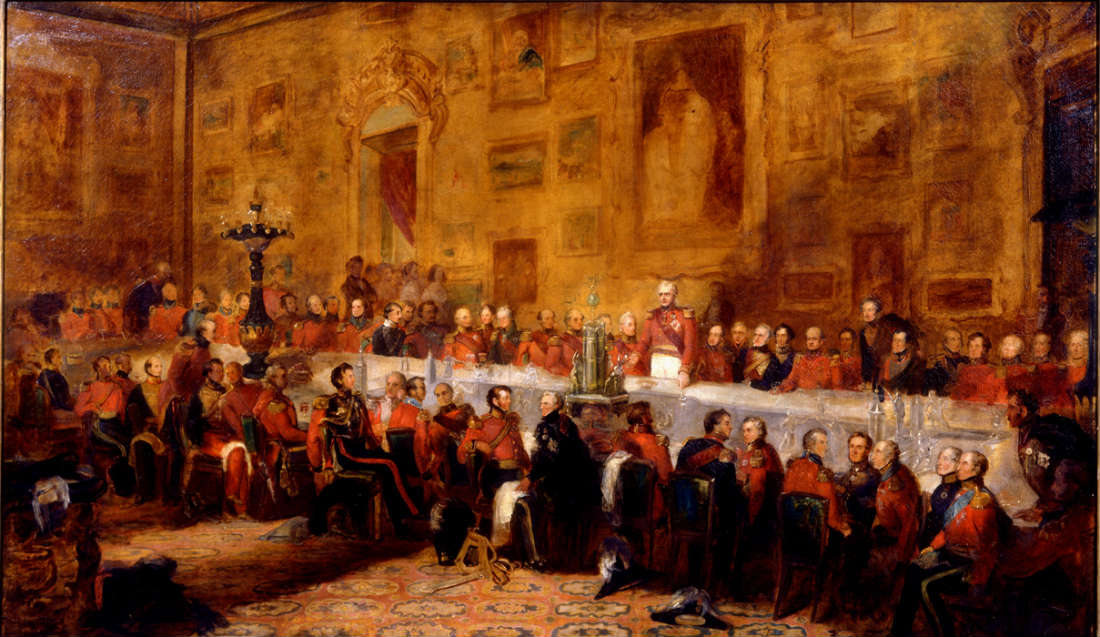2015 Rewind – Best of the Blog: Being at the Table – A CPO’s Tale of Woe
Our final rewind comes courtesy of one of our guest writers and friends of Procurious, Giles Breault. The article, originally shared on LinkedIn discusses what procurement needs to do to take its seat at the table.
Some days ago while having a business lunch the topic of “being at the table” arose. It was our client’s fervent hope that as a newly appointed CPO, (a move that presumably underlined the importance of procurement) he one day would sit as a peer at the EXCOM table contributing to the strategy, growth and performance of the business. Well, thinks I, what a wonderful place to consider the notion of being at the table, while being at a luncheon table myself. It got me to thinking of the roles and responsibilities of those at and around the table.
The Options
Of course there are those whose knowledge, experience, and position, earn them a right to 1) be at the table and direct the actions of others, but there are also others at work in this community. There are those who 2) serve the table and whose unique knowledge and skills answer the call for action from those seated. Then, there is 3) the chef whose specialised skills provide the provender for consideration, and lastly there is that which is 4) to be eaten (a role that I vaguely felt myself as having held a few times).
I further reflected on how many times I heard this same refrain from many CPOs whose pre-dominant career objective was to be recognised for contributing to the business at the highest level and ultimately report as a board level peer. Moreover, I thought back on the many organisations I have come across where the “vital” role of procurement was often tucked way neatly in the CFO shop or Business Services shop where the chance of ever getting a seat at the executive table was remote at best.
Given the fact that procurement is now recognised as a key stakeholder in organisational performance, what is holding it back from somehow being fully accepted into the community of senior leaders? While no answer is fully sufficient in a short blog, a couple of themes have emerged over the years in our work with organisations going through their own procurement transformation.
While business knowledge and acumen are the principle differentiators between those around the EXCOM table and those not, there is something more fundamental that is separating the procurement leader from the full approbation of their business colleagues. To put it back in the frame of my table metaphor,
“You don’t belong seated if you still sound like a waiter”.
And that is the essential point.
The Prerequisites
Two major things must occur that help propel procurement organisations to the senior level of strategy. Firstly, procurement must lose the connection to purchase orders. I hear some of you shouting “Heresy!”, but what I mean is that the procurement leader has an extraordinary difficulty of representing him/herself as a strategic player when the next topic of conversation is; “What is your order placement efficiency?“ Every effort should be made not to own any portion of the operative procurement cycle.
Secondly and most importantly, is the fact that procurement organisations often make a vital error by creating a separate strategy for themselves that does not altogether align with the strategy of the business. What is more, is that the strategy is often unclear how it contributes to the business in a way that satisfies more than just the finance manager.
We often find that procurement leaders speak a different language from that of other senior business leaders. While they speak of category strategies, the business is interested in how real projects bring value to their organisations. While they speak of vendor management and control the business is seeking out how external innovations can help fuel business growth.
The Solution
We advocate two distinct approaches to these dilemmas.
Firstly, develop a strategy that links to the business and directly connects benefits generated to your internal clients. We call these the pillars of successful strategic procurement and the steps are broadly as follows:
- Create a procurement strategy directly linked to the company’s goals
- Embed the annual procurement cycle into the company business cycle
- Drive “Lighthouse” projects directly supporting internal business clients
- Pull value through by having the ability to directly influence team actions
- Ensure that reporting is visible to your customer and ideally conducted by an organisation other than procurement
Secondly, develop an improved process of understanding the needed innovations required by your ultimate customer and significantly improve the way innovations are sought, collected, evaluated and ultimately adopted from the supplier base. We call this call the Trading Relationship Management process, and Procurement has a natural home at the heart of it.
While there is no guarantee that armed with these dual capabilities, there will be instant recognition of procurement as a future EXCOM member. However what is certain, is that Procurement will begin to demonstrate that it is not just generating business wide savings but can show where and how that value is generated and most importantly how such benefits accrue directly to internal stakeholders. Likewise other business leaders will also recognise procurement’s role as the conduit to supplier enabled innovation. Taken together, these elevate the strategic language of the function.
I explored these ideas with my lunch guest who understood and recognised how important it was for his team to strategically transform, but like so many such discussions it had to be cut short due to pressing issues at the client’s facility (I think he had to go check how many requisitions had been placed that day).
